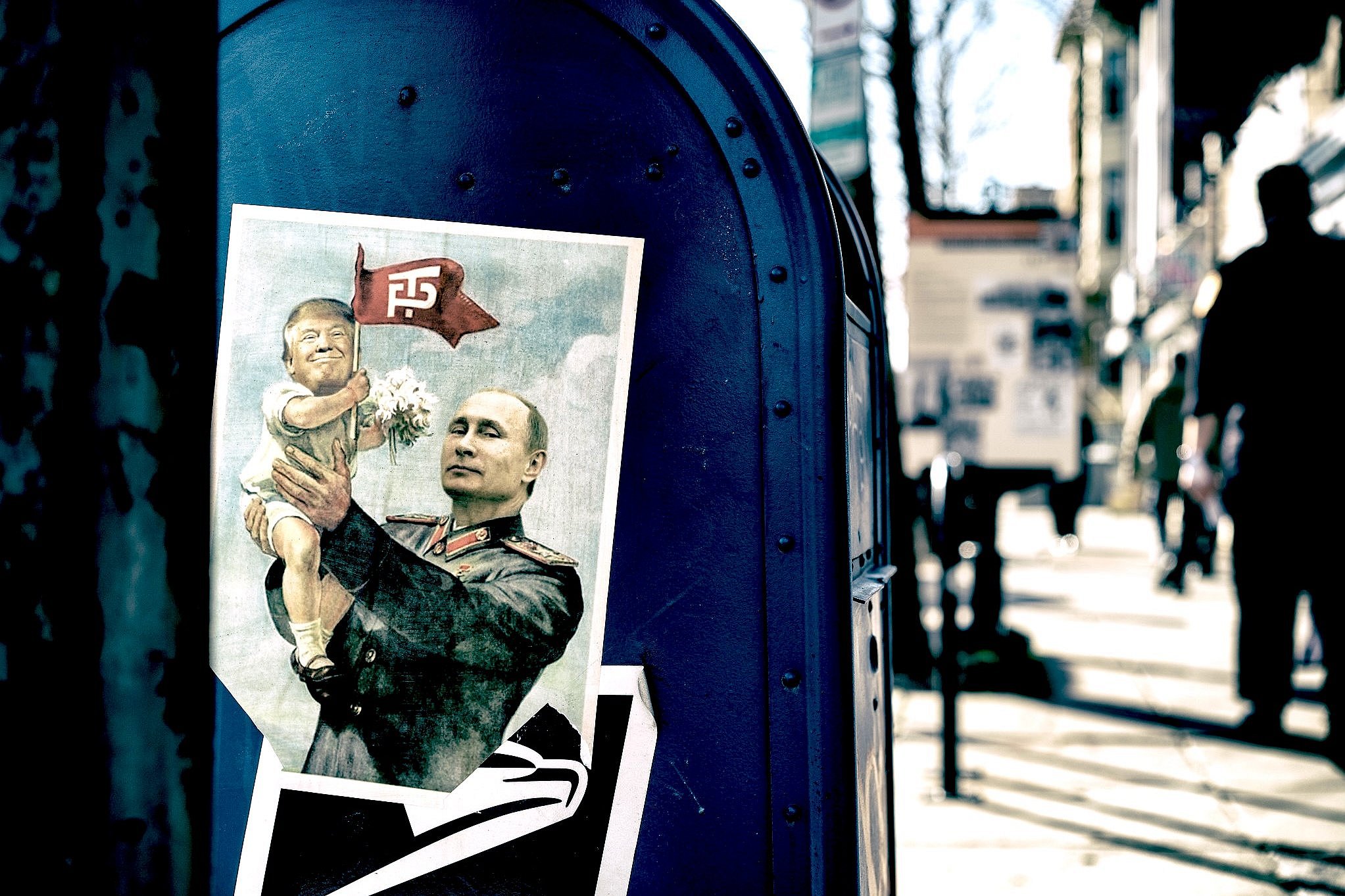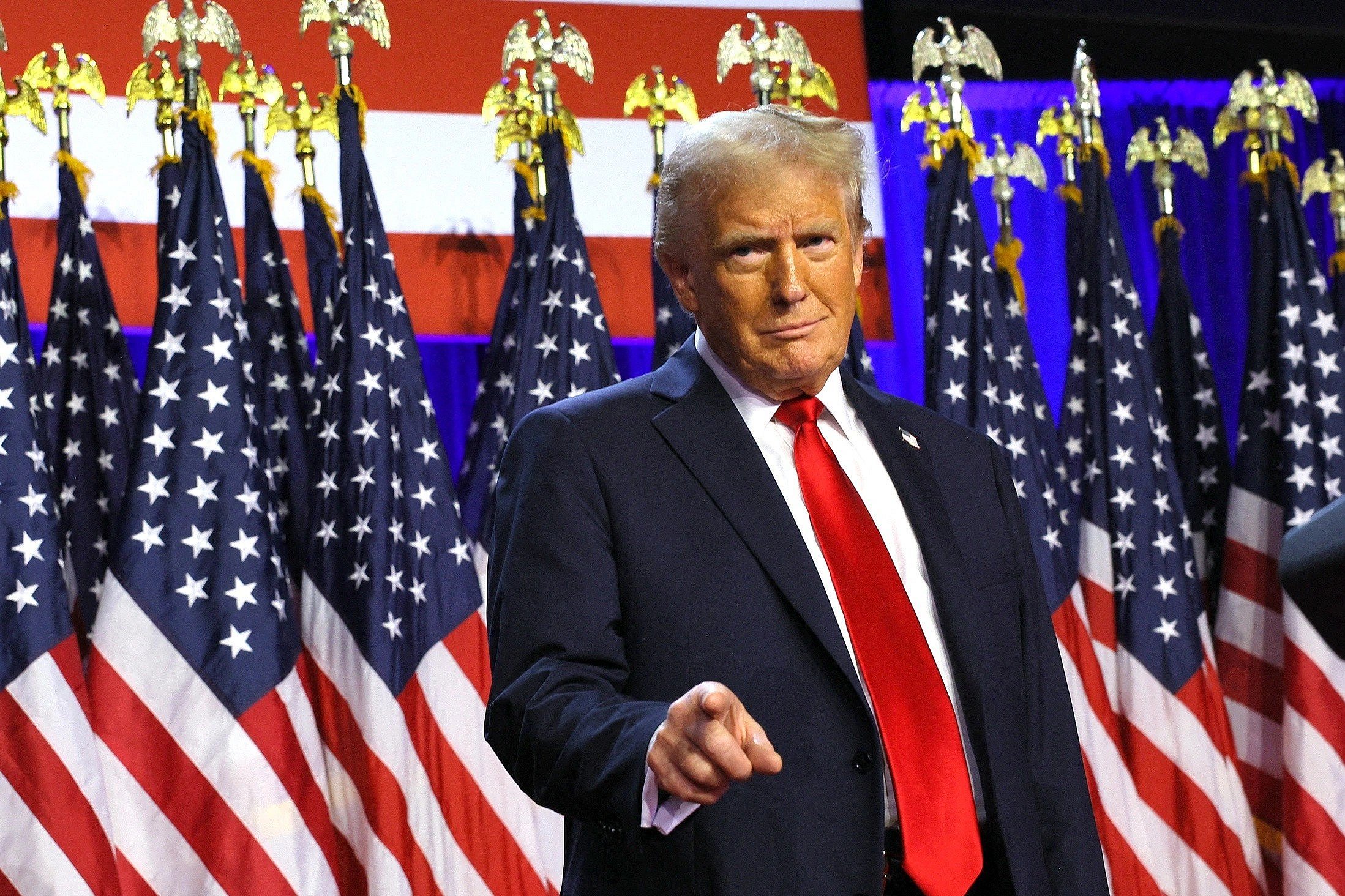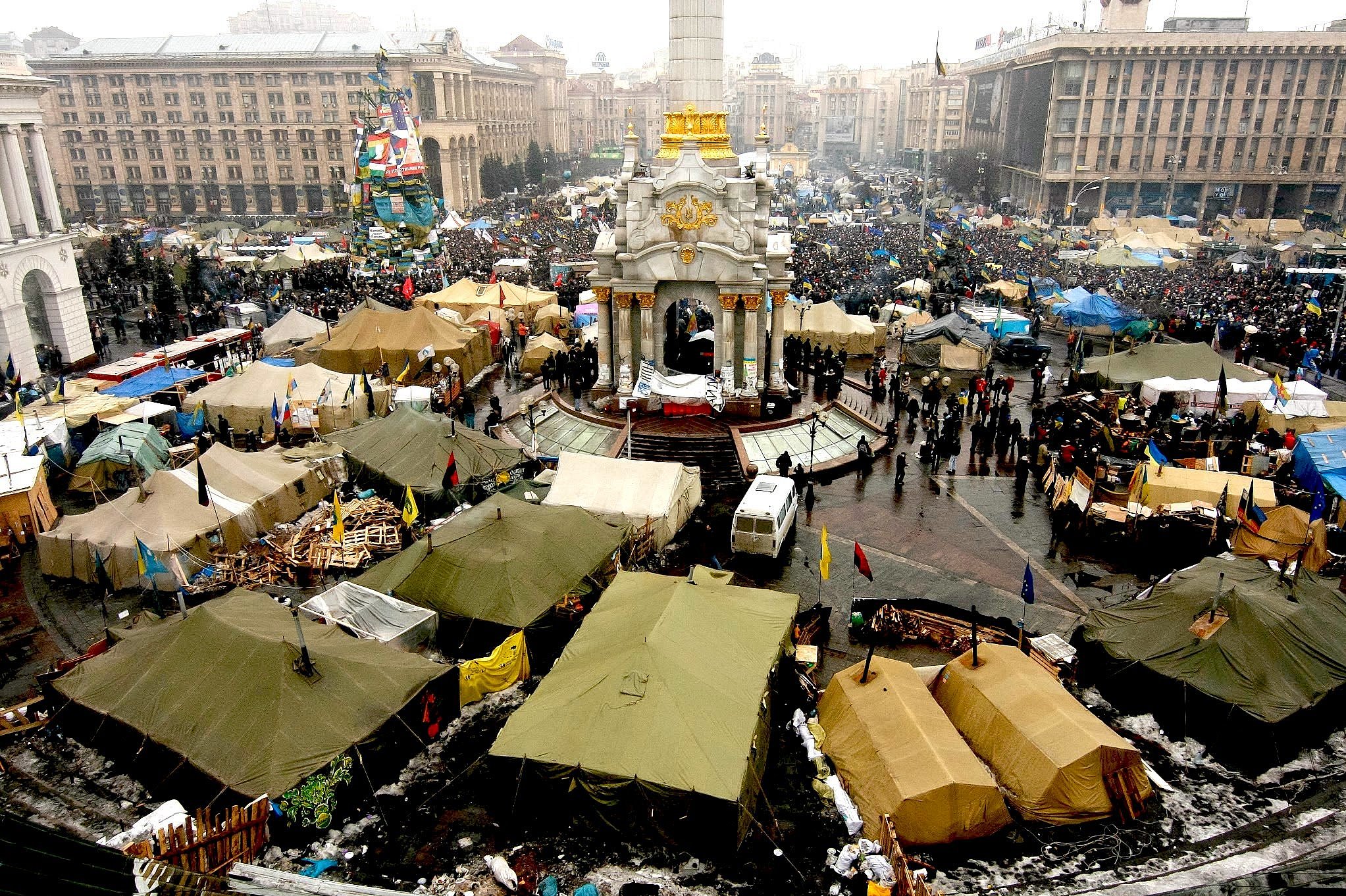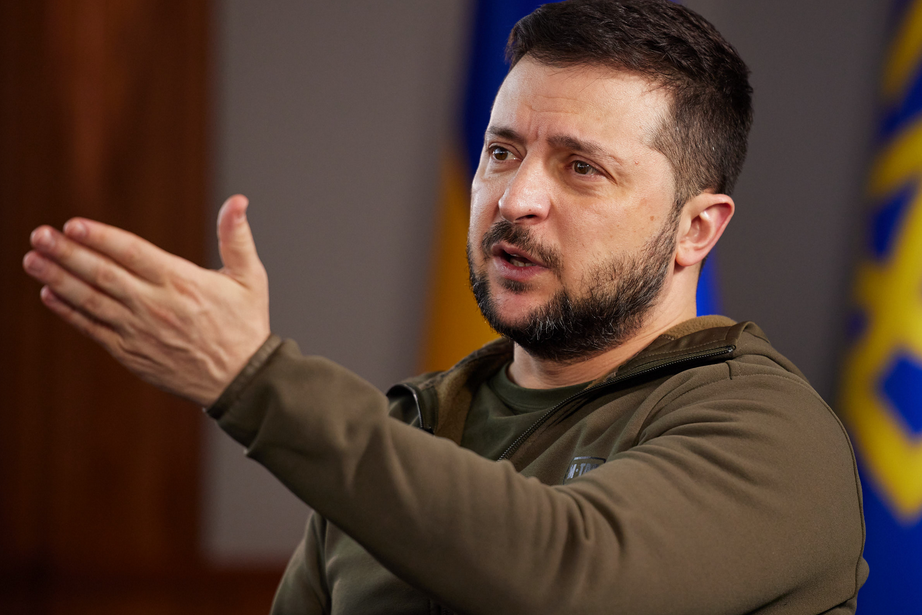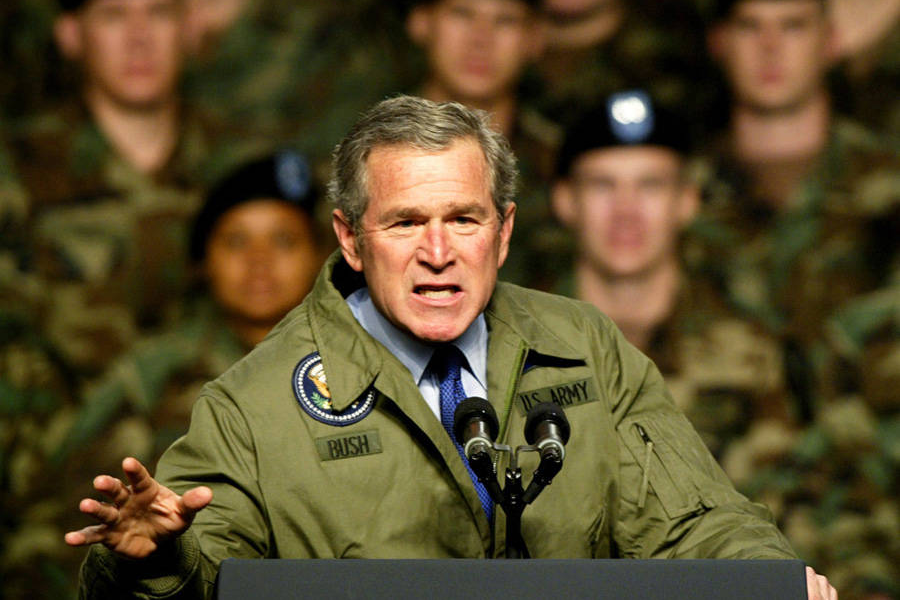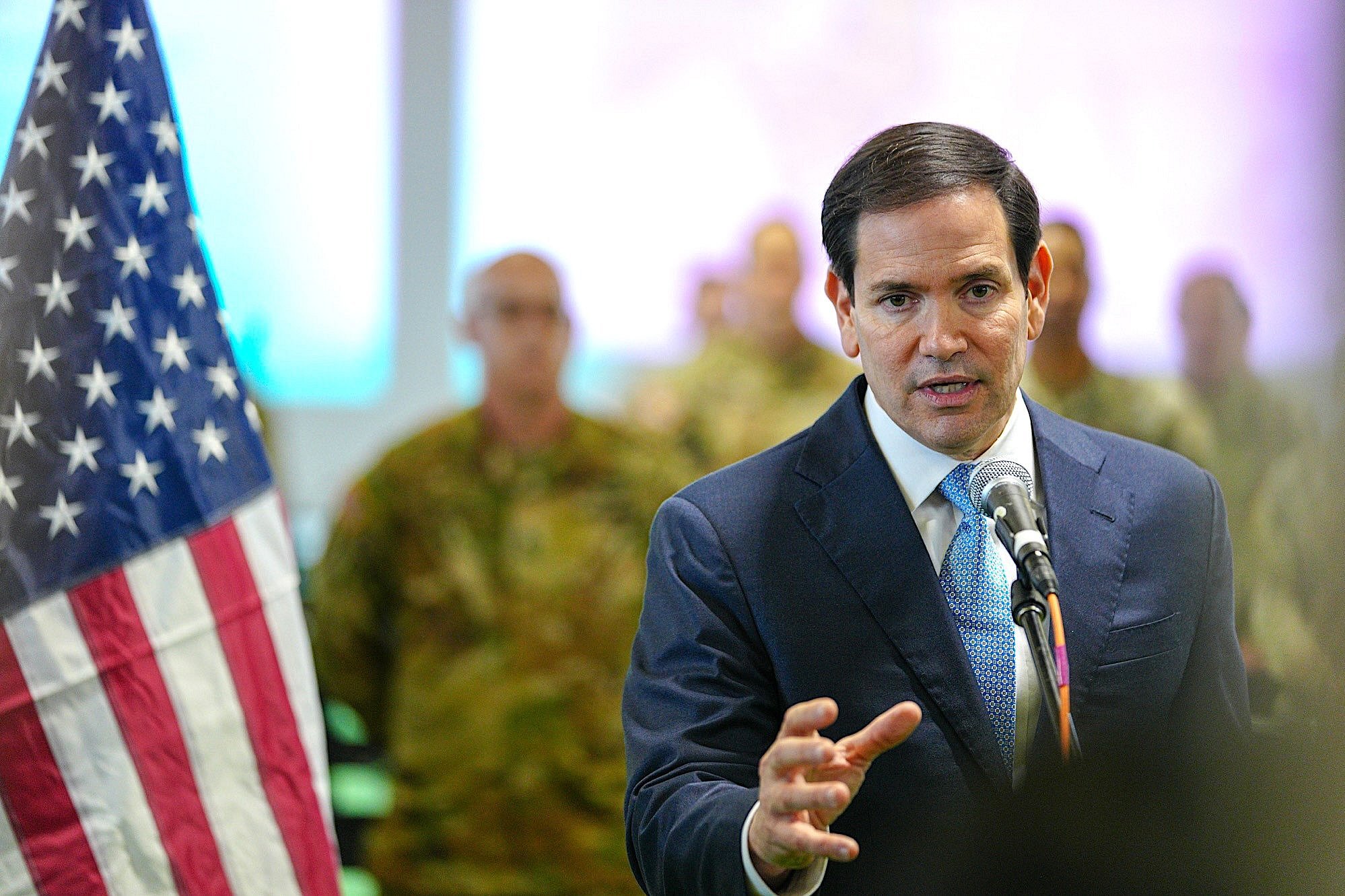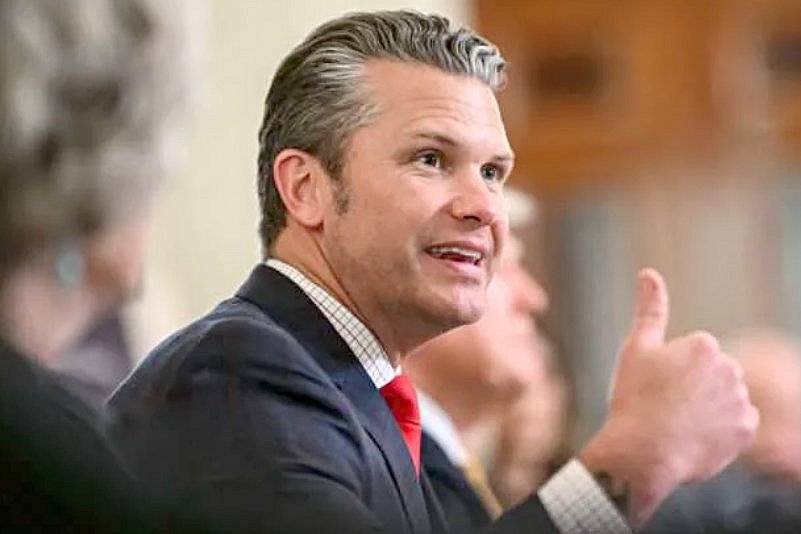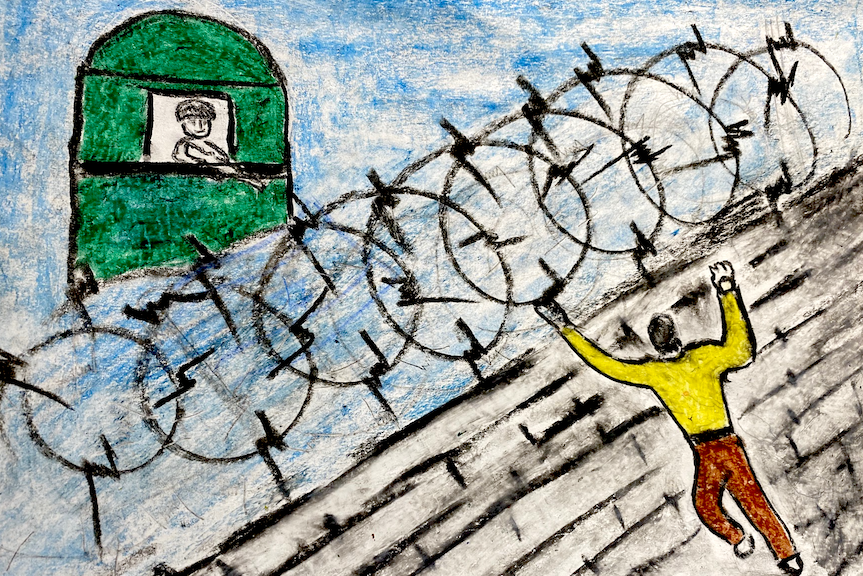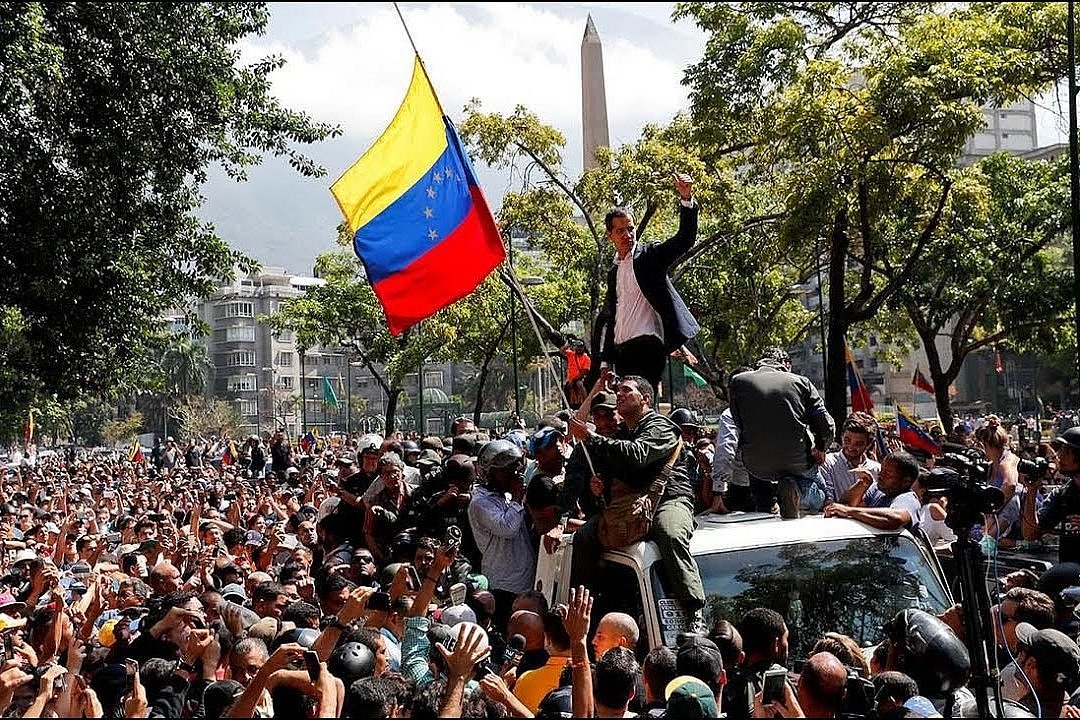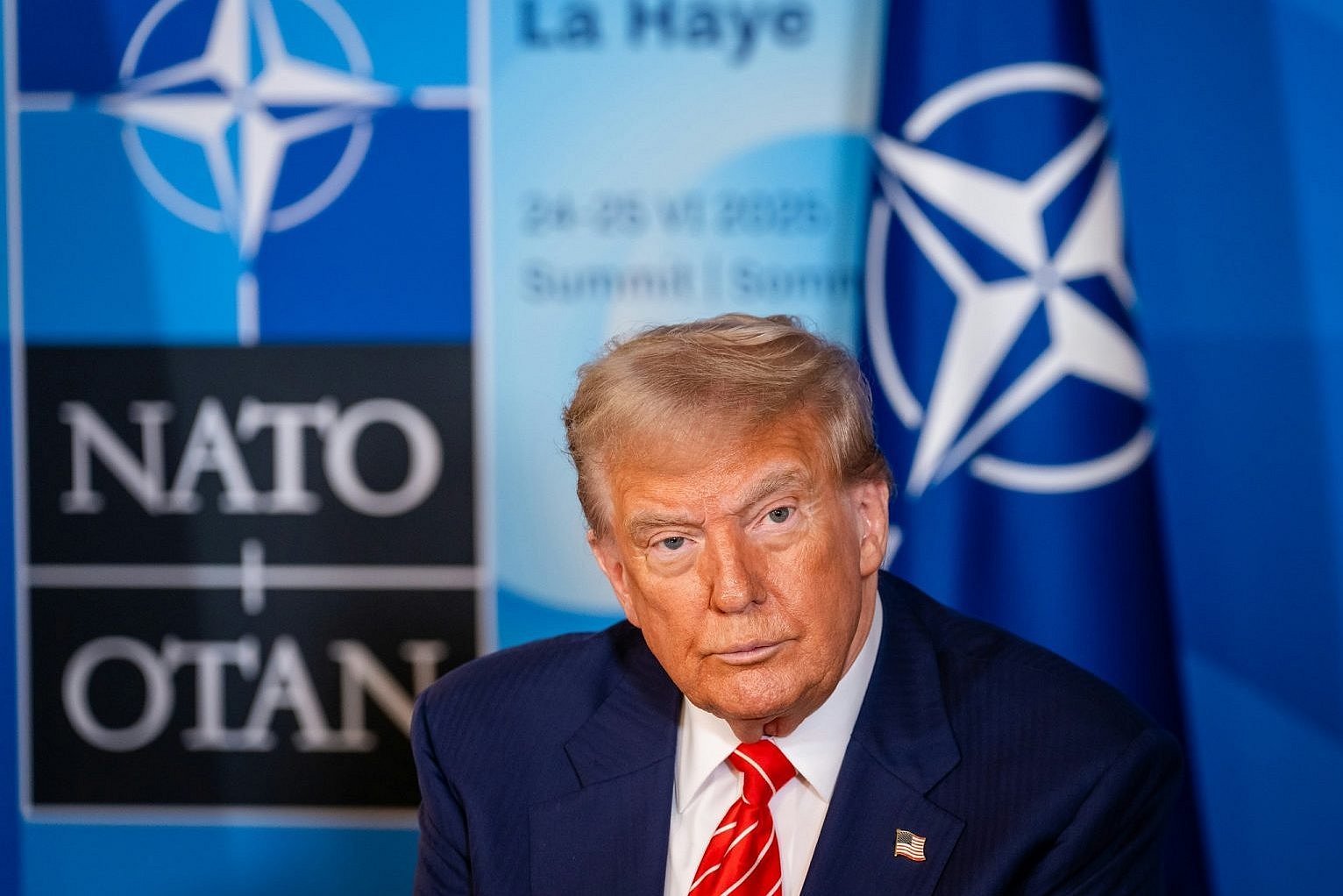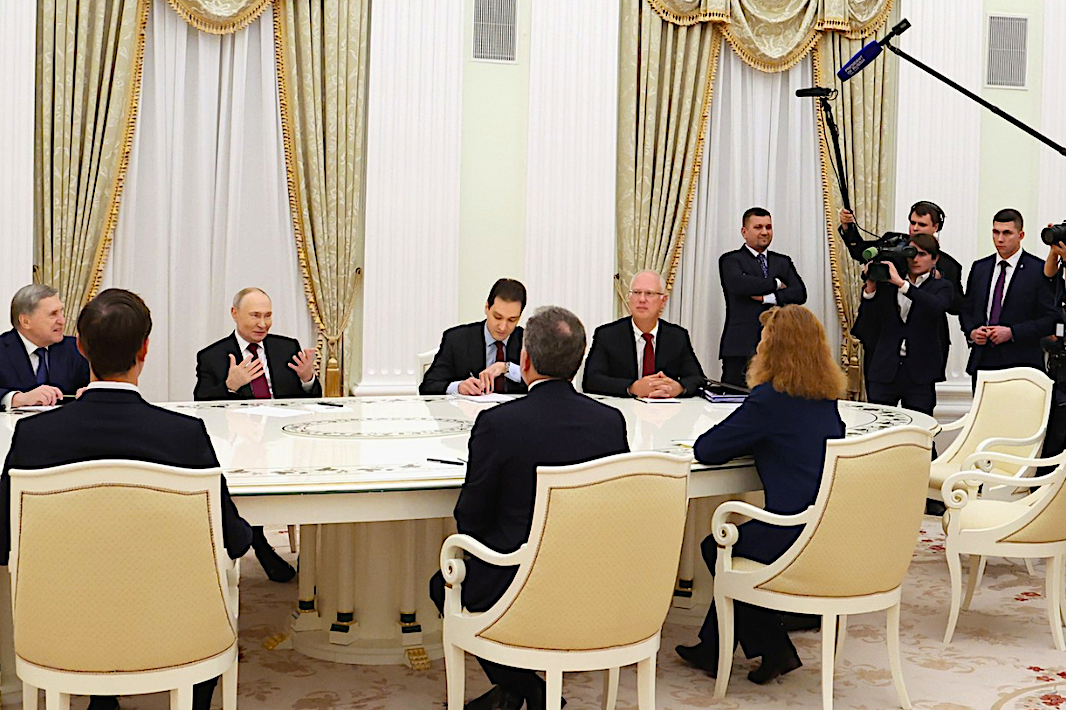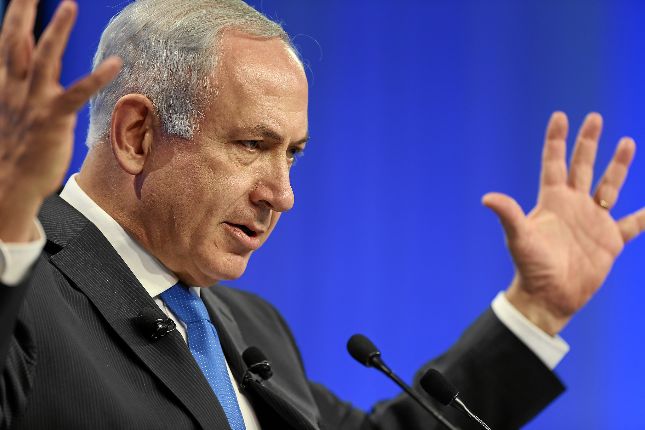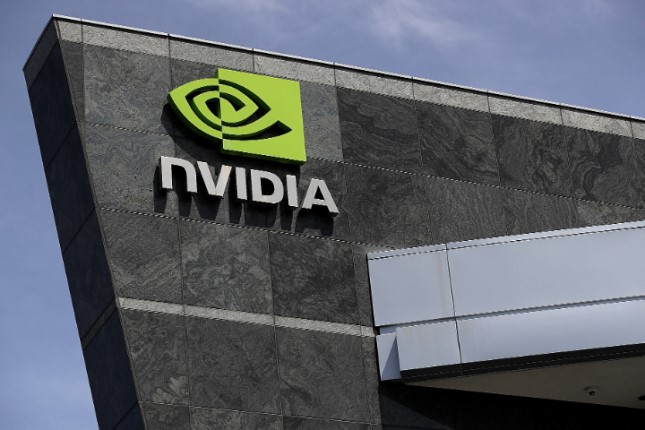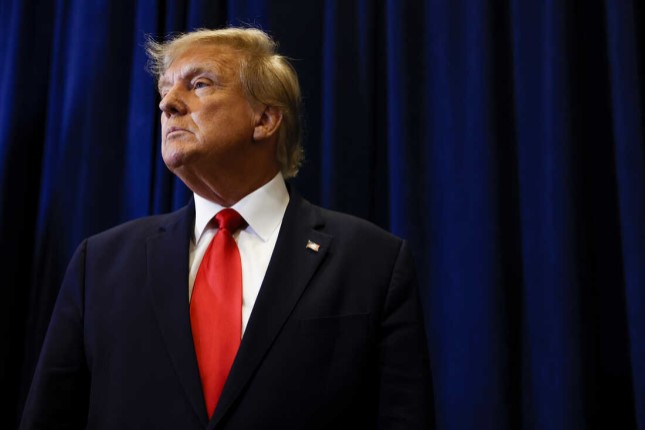Not that we needed more evidence to dismantle the extravagant tower of lies and disinformation known as Russiagate: This was accomplished years ago.
But with the release last week of a previously classified Appendix to a flawed but minorly useful investigation concluded two years ago, the method of those who built this edifice grows clearer and the list of their names longer.
Altogether good. The more hard evidence the better. Publication of the 29–page annex to the May 2023 report John Durham, a special counsel named in the final months of the first Trump administration, will give the historians yet more to work with. And it falls to the historians, I reluctantly conclude, to get this long, destructive episode properly into the record.
The Russiagate hoax — Donald Trump’s term is good enough — lies like rubble all around us, but as I contended in this space seven years ago this month, “We live within an institutionalized proscription of proven reality.” The headline atop that piece was “Too Big to Fail,” and so it remains.
Durham’s Appendix, until now withheld from the public record, lands us back in the familiar dynamic of disclosure followed by denial — the disclosures damning and the denials hopelessly flimsy but advanced via our corporate media with a power it is no use denying.
Disclosure and denial has been inevitable since what we came to call Russiagate began to take shape in mid–2016.
That was when Donald Trump, then launching his presidential campaign, started proposing a new détente with Russia, ending America’s wars of adventure and the decommissioning of the North Atlantic Treaty Organization — you know, crazy things, things that threatened the very pillars of our beloved imperium.
Those opposed to these madman ideas elaborated a regime of falsehoods and subterfuge to sink Trump as he ran for office and, as it turned out, after he assumed it.
The running theme rested on the malfeasance of Russians — yes, the Rrrrrussians, who hacked the Democratic Party’s email systems, who gave said mail to WikiLeaks, who colluded secretly with Trump, who corrupted the elections in behalf of Trump, who “had something” on Trump, who, who, who: This did not go on endlessly but it often seemed to.
The authors of this most conjured of tales were comprised primarily of the Democratic Party leadership, notably but not only Hillary Clinton’s campaign machine, the intelligence apparatus, the Federal Bureau of Investigation and — but how can we forget our dearest friends — the clerks in mainstream media serving these constituencies.
I have to say, as a covert political operation there was a good chance at the outset Russiagate would work. It was built to last but a few months: Clinton would take it in November 2016, as the whole world assumed, and the entire apparatus could be discarded and forgotten.
But on the morning of Nov. 9 it was obvious those who had constructed the Russiagate case had radically over invested. A machine made to endure a matter of months would have to last four years.
So began the sometimes grotesque, sometimes silly, always destructive chicanery of the Russiagate years. I date its first appearance to Friday, July 22, 2016, when WikiLeaks released roughly 20,000 emails pilfered from the Democratic National Committee’s servers.
Among much else, these showed that the DNC had systematically subverted the campaign, for a time a threat to the party’s neoliberal elites, of Bernie Sanders.
So did the fictions, coverups and deflections begin.
On the Sunday talk shows but two days later, Robby Mook, manager of Clinton’s campaign, went back-to-back on ABC’s This Week and CNN’s State of the Union to explain that what concerned the Clinton people and the DNC was not what was in the mail but — you can finish the sentence — the Russians’ intrusion into the party’s computer servers.
Mook on the CNN program:
“What’s disturbing to us is that experts are telling us that Russian state actors broke into the DNC, stole these emails, and other experts are now saying that Russians are releasing these emails for the purpose of helping Donald Trump.”
Anonymous Experts
Experts, experts, experts: There would be no end of experts, none ever named, for the next four years. From them we learned, or were supposed to learn, all of the above-stated: The Russians stole the mail, the Russians co-opted Trump, the Russians meddled in the electoral process, the Russians attacked electricity grids and so on.
A year and a few months after Mook opened the gates of Russiagate, I reported on the work of Veteran Intelligence Professionals for Sanity, VIPS, and a gathering of forensic scientists associated with them, showing, by way of the metadata all digital messages bear, that what was supposed to be a Russian hack of the Democrats’ emails almost certainly was a leak from the inside.
In brief, the speed of the download was too fast for an external “exfiltration,” as these things are called.
The piece I wrote on this, based on extensive reporting over many weeks, appeared in The Nation on Aug. 9, 2017. Among much else, it showed that a cybersecurity firm called CrowdStrike, which appeared to have extensive connections with U.S. intelligence, had to be lying when it asserted it had all the metadata necessary to prove a Russian hack.
Parenthetically and no more, The Nation fired me for reporting and writing that piece, such was the frenzied pitch Russophobia had reached by this time.
The leak-not-hack revelations were but a step on the way to exposing the whole of the Russiagate fabrications. The entire structure eventually collapsed of its own weight. An important moment came in the course of that fateful year, 2017.
Many prominent Democrats had by then professed in front of microphones and cameras to have or have seen evidence of Russia’s malevolent deeds. But in May of that year they all admitted in congressional testimonies they had none and had seen none.
CrowdStrike, so key to the whole story, acknowledged on Page 32 of the closed-door House Intelligence Committee testimony that it had no forensic data or metadata establishing a Russian hack of the DNC’s mail servers.
What a difference a legally binding oath makes, I recall chortling at the time.
Those hearings, it is important to add, were never covered in the mainstream press and, at the insistence of Capitol Hill Democrats, were not made public for three years afterward. You would have thought the mainstream press and broadcasters would have covered it when these testimonies were final made public in April 2020. But no, silence again.
I pencil-sketch the years in question to give an idea of how all the corruptions of the Russiagate years — a paradox here — were exposed but suppressed at the same time. There is much I have not mentioned.
In January 2023, Jeff Gerth, the noted investigative journalist, published a four-part series on the corruptions of the press and broadcasters in reporting — or not, as so often — the Russiagate falsifications. This appeared in the Columbia Journalism Review.
Gerth’s four pieces ran to more than 24,000 words. The one major feature he omitted to mention, I must add, was the fraudulent claim that Russians had hacked the Democrats’ email. The leak-not-hack dimension of the long tale remains untouchable, it seems, but, like the rest of the Russiagate case, this has long been an open-and-shut matter of record.
Merrick Garland, the Biden regime’s attorney general, sent the Durham Report to Congress in May 2023. You could argue that paying-attention people already knew much or most of what was in it. But an official government source at last appeared to go on the record with the truth of the Russiagate scandal. Durham also provided a useful chronology of events such that one could follow the bouncing ball with more confidence than conjecture.
Clinton Operation to Frame Trump
As the Report had it, Hillary Clinton authorized an operation to frame Trump within days of the leak of emails from Democratic Party servers in July 2016.
The F.B.I.’s leadership acted quickly to set this operation in motion. It first considered using the offhand remarks of George Papadopoulos, a minor Trump campaign volunteer, to obtain surveillance warrants against various of Trump’s advisers. When that proved too flimsy, the agency turned to the now-infamous Steele Dossier, which was nothing more than Clinton campaign paid-for opposition research on Trump.
The F.B.I. knew the dossier was junk, but it punched it up sufficiently to get the warrants needed to proceed against Trump and his people. This was Crossfire Hurricane, the F.B.I.’s anti–Trump op at the heart of the Russiagate hoax.
Such was the gist of Durham’s findings, but his Report immediately struck many of us as peculiar. It described crimes but recommended no criminal investigations. People had broken the law, but Durham named no lawbreakers.
As I wrote at the time, it looked as if the Biden regime thought it was time to move Americans decisively beyond the mess the Democrats had made for themselves when they persisted with the Russiagate rubbish after Clinton’s defeat in 2016. A snippet from that piece:
“It looks as if Garland found this an opportune moment to send the Durham Report to Capitol Hill, effectively to remove the entire Russiagate affair from the common American consciousness. With a presidential election 18 months away, Biden’s attorney-general must dispose of Russiagate and Durham’s probe as hastily and as best he can.”
In simpler terms, I would say now the Democrats were scuttling a ship that had been taking water almost as soon as it slid off the dry dock. Or, an alternative way at the point, this was what is known in spook-speak as a limited hangout: When an operation has been exposed, acknowledge the minimum so has to obscure all else.
The Durham Report’s substance and fate supports this interpretation. The text runs 316 pages — ample length to reveal and bury a great deal of information all at once. It was much anticipated and was made public on May 15, 2023. Within 10 days it had disappeared from the media and public discourse altogether.
It is the Appendix to the Durham Report that has now been made public. It gives us some of the “all else” the Report itself left out. Now we have some names, now the bouncing ball bounces further.
Its 29 pages derive from email traffic and memoranda that passed among various figures in the Democratic elite prior to the 2016 election, when the sink–Trump project was full-throttle.
Straight of the top, there is provenance to note. From the first page of the Appendix:
“Beginning in or about 2014, and continuing through at least in or about 2016, individuals affiliated with Russian intelligence services hacked and gained unlawful access to emails of numerous U.S. public and private U.S. entities — including government agencies, non-profit organizations, and think tanks based in the United States. Among the non-profit organizations hacked by Russian government actors in 2016 was the Open Society Foundations, formerly known as the Soros Foundation.”
This raises an obvious question of veracity. Durham’s people, the “we” in this document, answer it this way. I leave in the redactions:
“From… through… received from a… source, referred to herein as ‘TI,’ and shared with FBI intelligence consisting of… We identify the information provided by TI as ‘Sensitive Intelligence.’ ”
The conclusion to draw here seems to me evident. If the material in the Appendix were short of credible, or simply junk, Durham’s people would not have dedicated an annex to it. They would simply have omitted it as not pertinent to the case. They certainly would not have described it as “Sensitive Intelligence,” in caps no less.
Equally, this question: Were this material not substantive, would Durham and the Justice Department have kept the Appendix classified when A–G Garland made his tell-all journey up Capitol Hill with the Durham Report in his attaché case? I simply don’t see it.
Among those figuring in the traffic Durham considered were Debbie Wasserman Schultz, who was key in the subversion of the Sanders campaign; Julianne Smith, the Clinton campaign’s foreign policy adviser; and Leonard Benardo, a senior v–p at the Soros operation, the Open Society Foundations.
Here is at least some of what remains to be disclosed in the Russiagate story. We have more detail now, in any case. It is now a matter of public record that Hillary Clinton signed off on plans to destroy Trump with a disinformation op tying him to Russia, the stated purpose being to distract the public — recall my quotation from Robby Mook above — from the email scandal then threatening Clinton’s campaign.
The author of this operation, the email traffic establishes, was Smith, who urged “raising the theme of ‘Putin’s support for Trump’ [and] subsequently steering public opinion” such that voters would believe the Kremlin was hacking mail and voting technology and all the rest in Trump’s behalf.
Here is Benardo on July 25, 2016 (coincidentally the day Salon published my commentary as linked above):
“Julie [Smith] says it will be a long-term affair to demonize Putin and Trump. Now it is good for a post-convention bounce. Later the FBI will put more oil into the fire.”
And elsewhere this, a favorite line of mine given my leak-not-hack reportage in The Nation. Again from Benardo:
“The point is making the Russian play a U.S. domestic issue. In absence of direct evidence, CrowdStrike and ThreatConnect will supply the media, and GRU [Moscow’s foreign intelligence service] will hopefully carry on to give more facts.”
Corporate Media Goes Back to Work
Were I employed as a Washington correspondent for a mainstream newspaper or broadcaster, I would dread having to cover the Durham Appendix. Imagine selling your integrity in broad daylight in exchange for a paycheck.
Imagine, I mean to say, reporting this material while continuing to advance the long-exhausted line that the Democrats were innocent of wrongdoing during the Russiagate years, the Russians meddled at every turn and altogether that the Russiagate story was all along just as it was reported at the time.
But so the coverage of the Durham Appendix has been. Corporate media are so far back in the mists they still pretend it is a given that the Russians hacked the Democrats’ email in 2016 and that any thought the Clinton campaign ran an operation to discredit Donald Trump is sheer “conspiracy theory.”
As to the mail traffic cited in the Appendix, nah, Russian intelligence “likely” — a longtime weasel word and very key in this case —fabricated this stuff.
You have Leonard Benardo denying that he sent the email bearing his name, that he has no idea who “Julie” is — a stretch too far in my view — and that he would never use a phrase such as “put more oil into the fire.”
As to Julianne Smith, she doesn’t remember ever suggesting to the Clinton campaign that a disinformation op to subvert Trump was the thing to do.
This settles it, then. It is all a put-up job. As we saw throughout the hot years of Russiagate, if a source says something that fits the orthodox narrative, this is evidence that it is just as these sources say.
The mainstream coverage, not to be missed, stays well clear of details that simply cannot be explained away or blurred, notably but not only the above-quoted reference to CrowdStrike as an ever-available tool of the Democrats. No mention of this in the reporting I’ve seen.
The reality, we have long known as a matter of record, is that CrowdStrike, which played a central role in the case constructed to prove Russia’s various intrusions into the 2016 election, was outright lying from the first.
The New York Times ran two articles on the Durham Appendix, one datelined July 31, the day the annex was made public; the other is what is called in the trade an explainer and was published a day later. Read them, or try to read them. Tell me, just a few paragraphs in, if you can find your way through the cotton-wool English to understand what is being said.
The headline atop the piece I wrote when the special counsel’s report came out two years ago read, “John Durham and the burying of American history.” This reflected my most fundamental concern and the time. And it is my fundamental concern once again.
The Durham Report was advanced as a dramatic reveal-all after years of official obfuscation and confusion. “But it shapes up after a few days’ consideration,” I wrote then, “as part of the effort to bury the Russiagate hoax the way the Warren Commission buried the facts of the Kennedy assassination for many years.”
We have just got a variant of the same with the publication of the classified Appendix. History is once again being interred. As important as the Annex is, the concerted attempt to obscure its contents is equally so.
Russiagate has done untold damage if we measure it by the global instability it has precipitated, the dangers of a third world war and other such matters. Let us not miss the extent to which it succeeded in befuddling the majority of Americans, so leaving them incapable of understanding and judging events and altogether the world in which they live.
I wondered all along how those who so foolishly invested in the Russiagate hoax would escape their predicament when it all came undone. This is how. The conjurors of all the lies propose again to plunge us ever deeper into what I came to call the Republic of Pretend.
Vigilance, readers. It is the resort of those who have not been stupefied these past nine years. Vigilance and the bearing of witness. The historians with the integrity to write of our time honestly will appreciate this when they sit with the records and begin their work.
Source: Consortium News.
